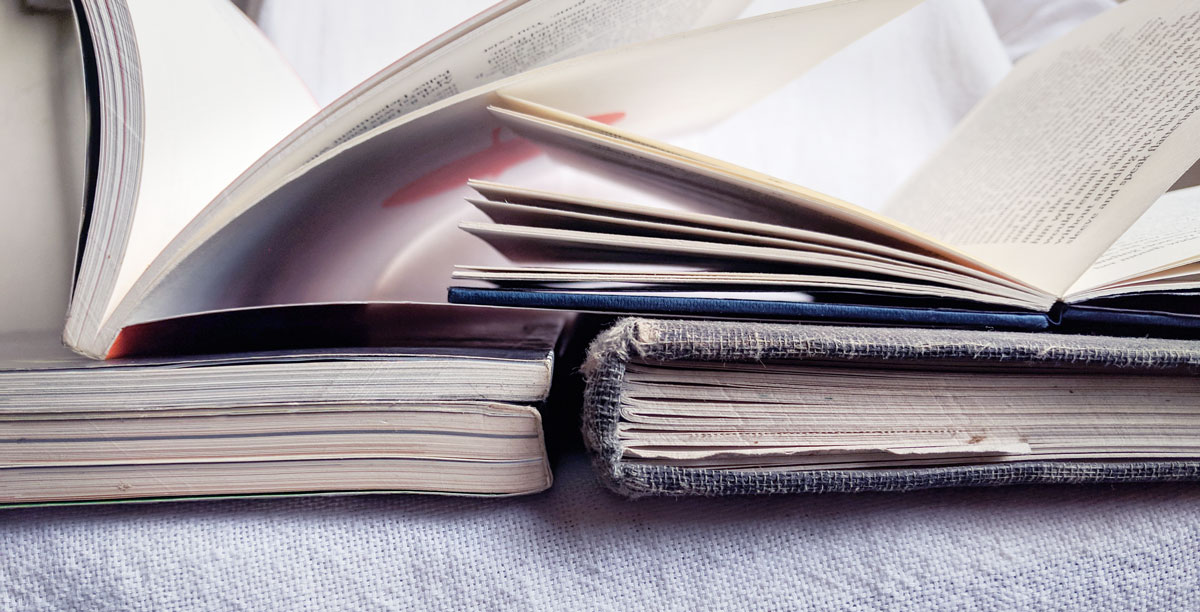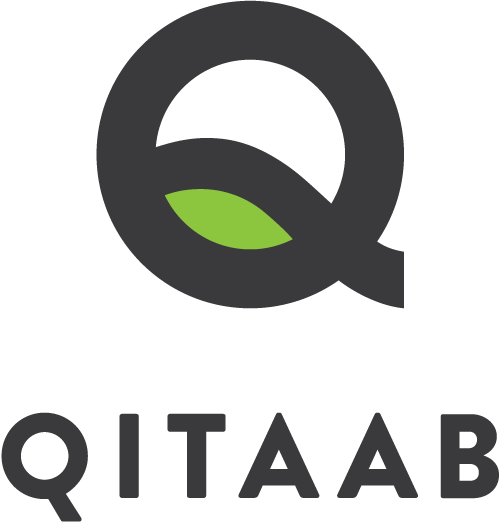On Having a Great Spine August 18, 2017 – Posted in: Book Design – Tags: binding, book design, hardbound, hardcover, paperback, perfect binding, Qitaab, qitaab publishing, saddle stitching, spine
One of the most critical components of a book’s structure tends to be its spine. It is the part that holds the pages together and is the pivot about which each page turns. It also determines the strength and longevity of a book and also how easy it is to read and handle. Having a great spine isn’t just an aesthetic attribute either, though it can be designed in a way to achieve both a unique visual appeal and also be functionally practical.
While there are numerous ways in which a book can be bound, two methods tend to me more prevalent in the industrial production of books these days— perfect binding and saddle stitching.

Perfect binding (left) and saddle stitched (right) books.
Perfect Binding
In this method, the pages are trimmed from all sides, including the spine. Little equidistant grooves are made along the length of the spine, and a hot glue is used to bind these pages together and then to the spine. This method is used while printing novels, because it yields a flat, printable spine. The main negative of this process is that it tends to pinch the book at the spine, making it impossible to lay a book open flat.
The longevity of the book is also dependent on the quality of the glue and how porous the paper is. It tends to last longer with uncoated paper, because the glue soaks into the paper and holds it from the inside. A lot of books printed on coated paper tend to age badly because the glue becomes brittle and individual pages start to fall out.
Saddle Stitching
Saddle stitching involves sewing ‘forms’, or sets of folded sheets of paper with thread, and then binding each form to another to form whole books. This yields a book that can open flat, though certain spine configurations can also impair this. The spine also tends to not be flat, because the individual sections can’t be printed on, or have paper stuck to them
To solve this problem, we use a soft spine method that leaves the spine completely flexible, so all our books can be opened and laid out flat.
The printers and binder worked out a system with a two-layer spine, one to hold the forms (of pages) together and give the book structural strength, and a second layer that would cover the spine with a flat surface that could be printed on.
The Metamorphosis is our first book, and uses this same method of binding that allows the book to open and lay completely flat. We’re experimenting with ways to perfect this method and our upcoming notebook also uses the same design, making for an easy to write in notebook, where each spread can be opened flat and written or drawn across.
This is the first in a series of posts talking about the design and making of books, with focus on not just the aesthetic quality of the book but also on making books that are comfortable to handle and read. In future posts we’ll be talking about cover design, how pages are printed and made and other bookmaking topics that we hope you’ll find interesting. Watch this space for more!


